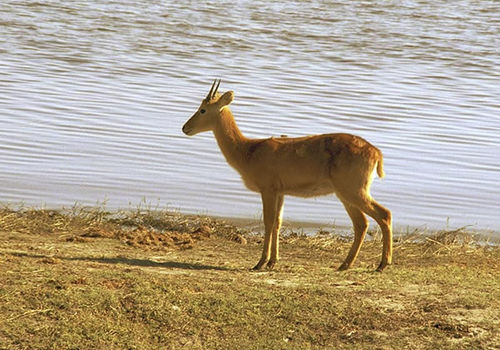
Puku
Kobus vardoniiPuku
Introduction: The puku (Kobus vardonii) was named in honour of Major Frank Vardon, an English elephant hunter, by explorer and missionary David Livingstone, although the name puku is a common Lozi or Tswana name. They frequent riverine areas and narrow grassland stretches between rivers and swamps. Females gather in small maternal groups of 6-20 females or calves with territories defended by adult males in solitary or bachelor groups. When alarmed, the puku emits a shrill, repeated whistle. Predators include lion, leopard and hyena.
Distribution: Far eastern regions of the Zambezi Region (formerly the Caprivi Strip) such as the Kwando River, Chobe River and Linyanti Swamps. Also on the eastern banks of the Chobe River in Namibia on the Puku Flats at Chobe Savannah Lodge
Diet: Predominately grazers of floodplain grasses, normally feeding in the early morning or late afternoon. Also eats seeds of the winter thorn and Kigelia flowers.
Colouring: Its coarse coat is a uniform golden brown in colour with paler underparts, including the underside of the tail. The forehead area is generally darker than the body and there are white patches around the eyes.
Breeding: Females calve in their second year after a gestation period of 8 months. Calves are hidden in vegetation and are born throughout the year, but mainly in the wet season.
Size: Males 0.9m and females 0.84m at the shoulder.
Weight: Males 77kg. Females 61kg. The strongly ridged horns are found only in males and grow between 45-53cm.
Klein Windhoek

